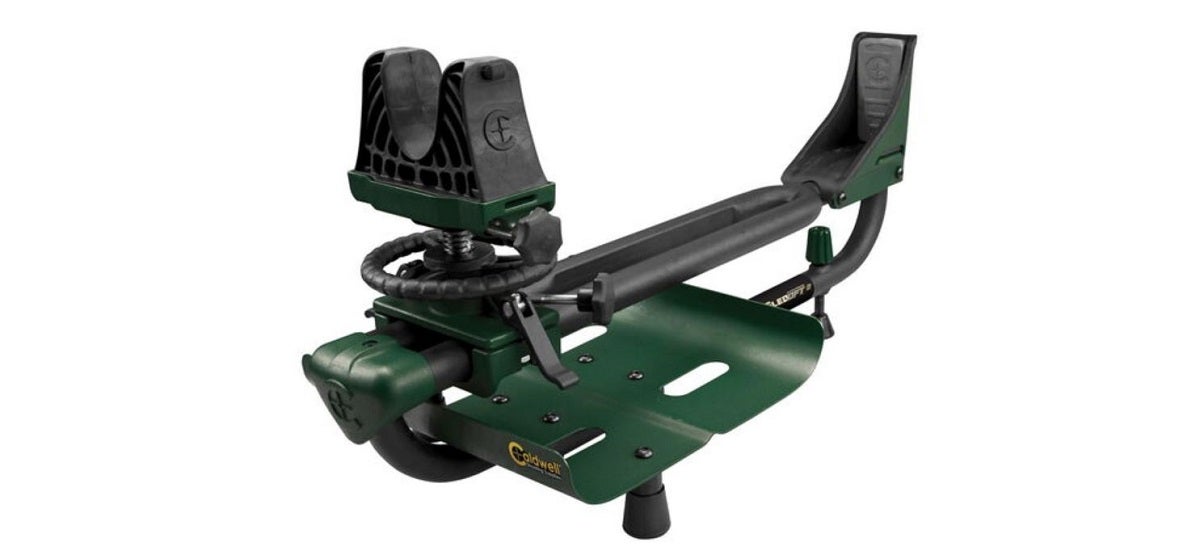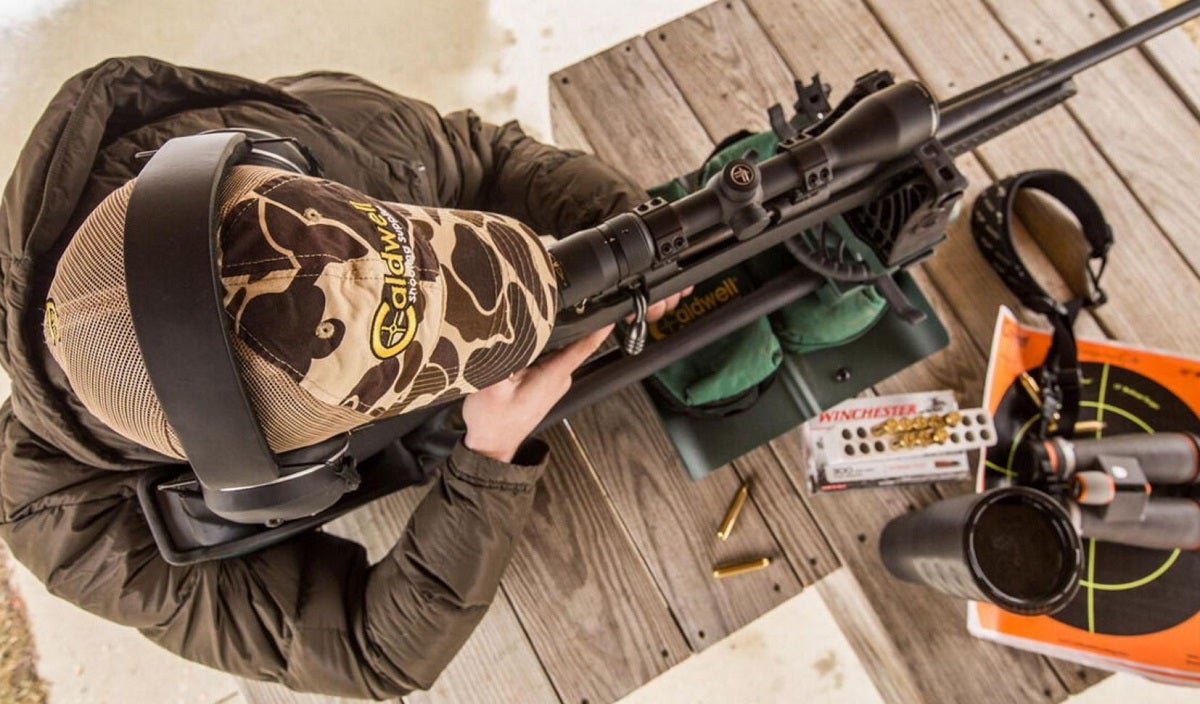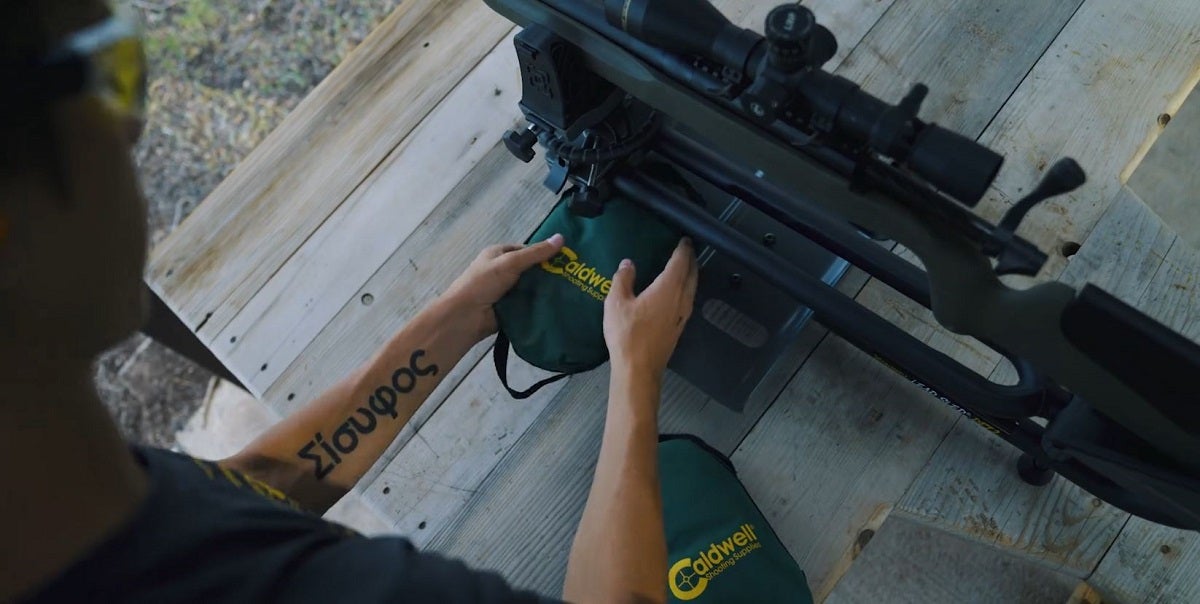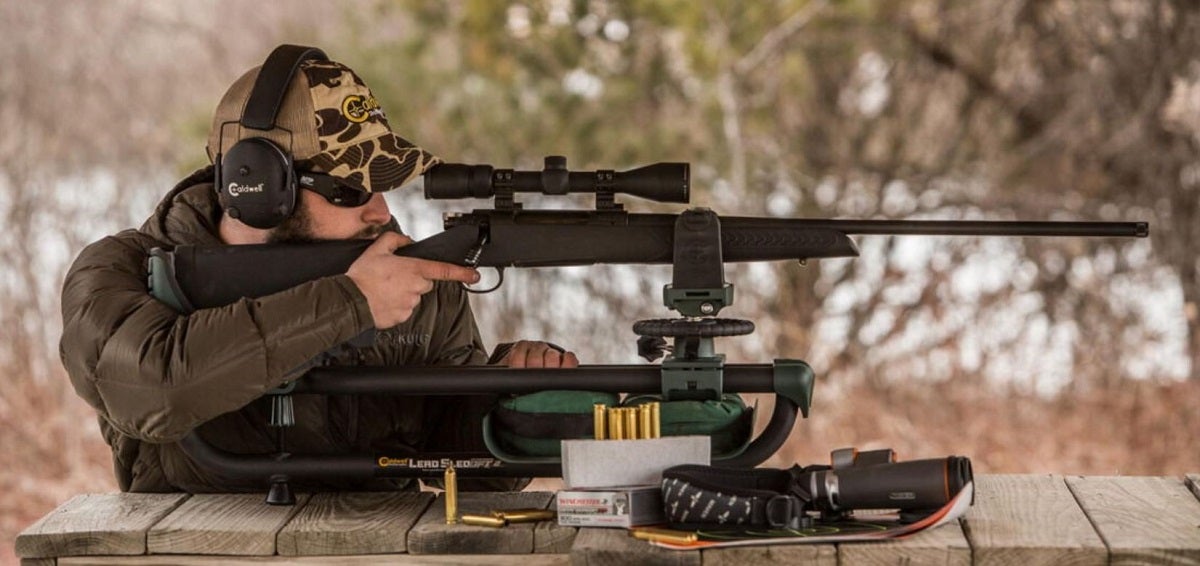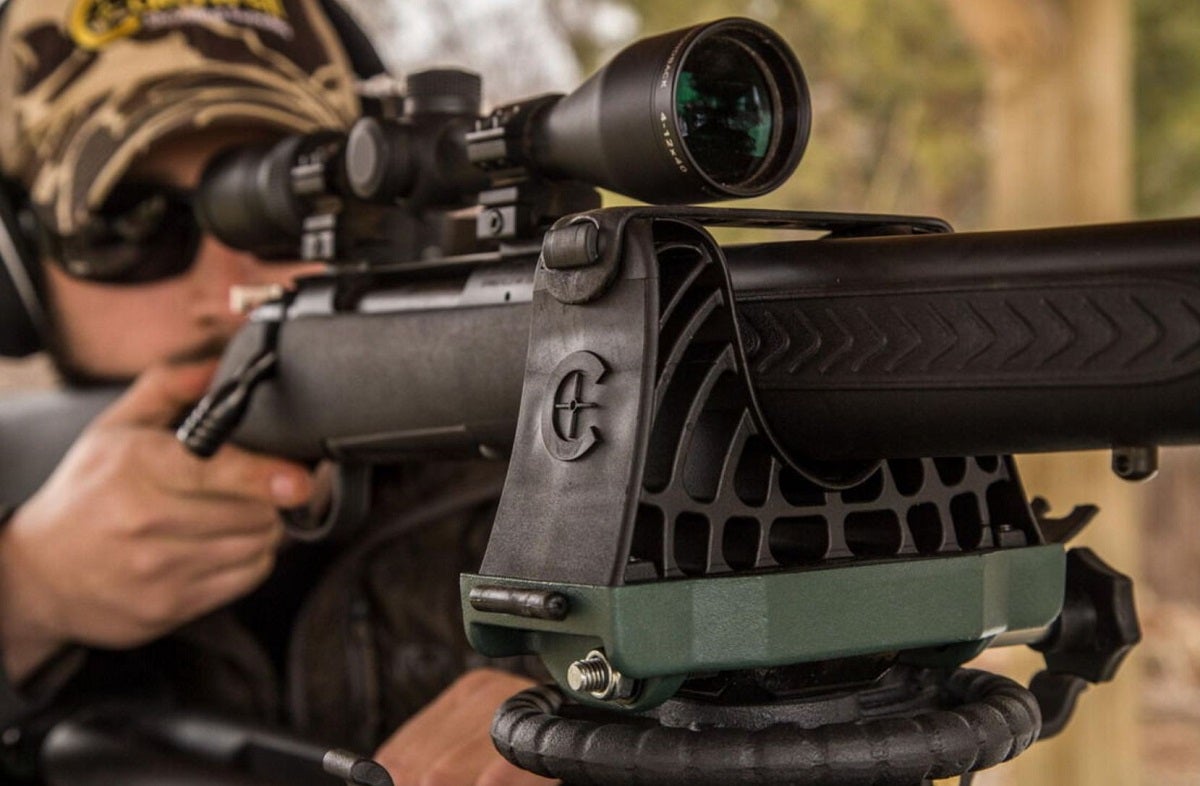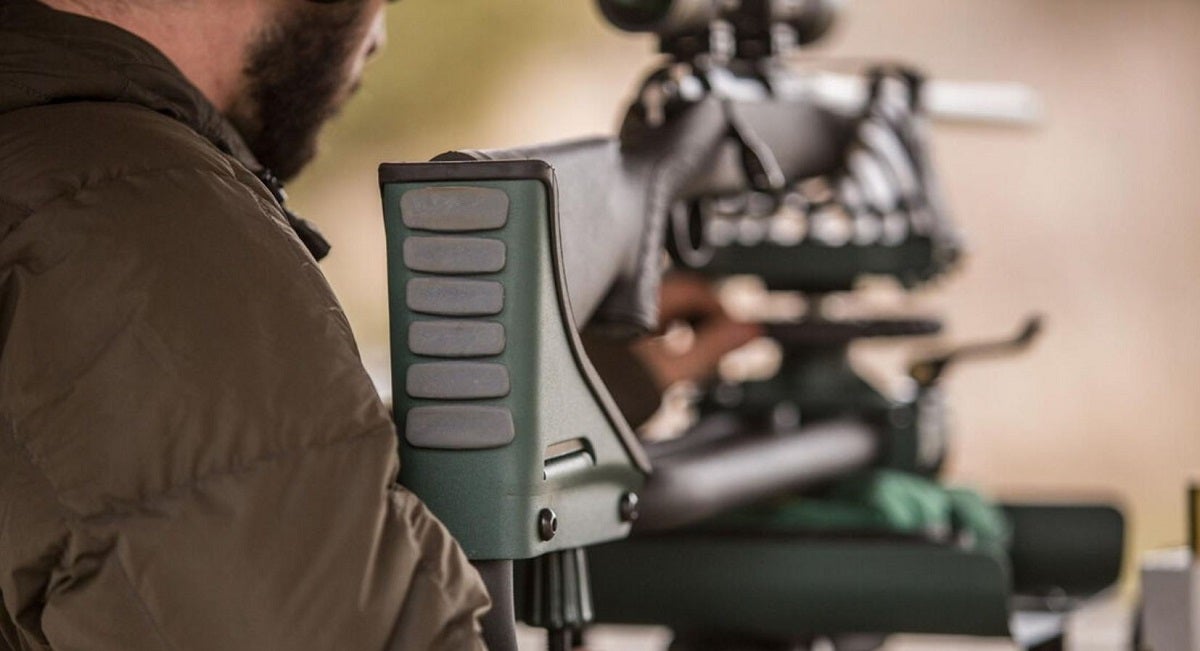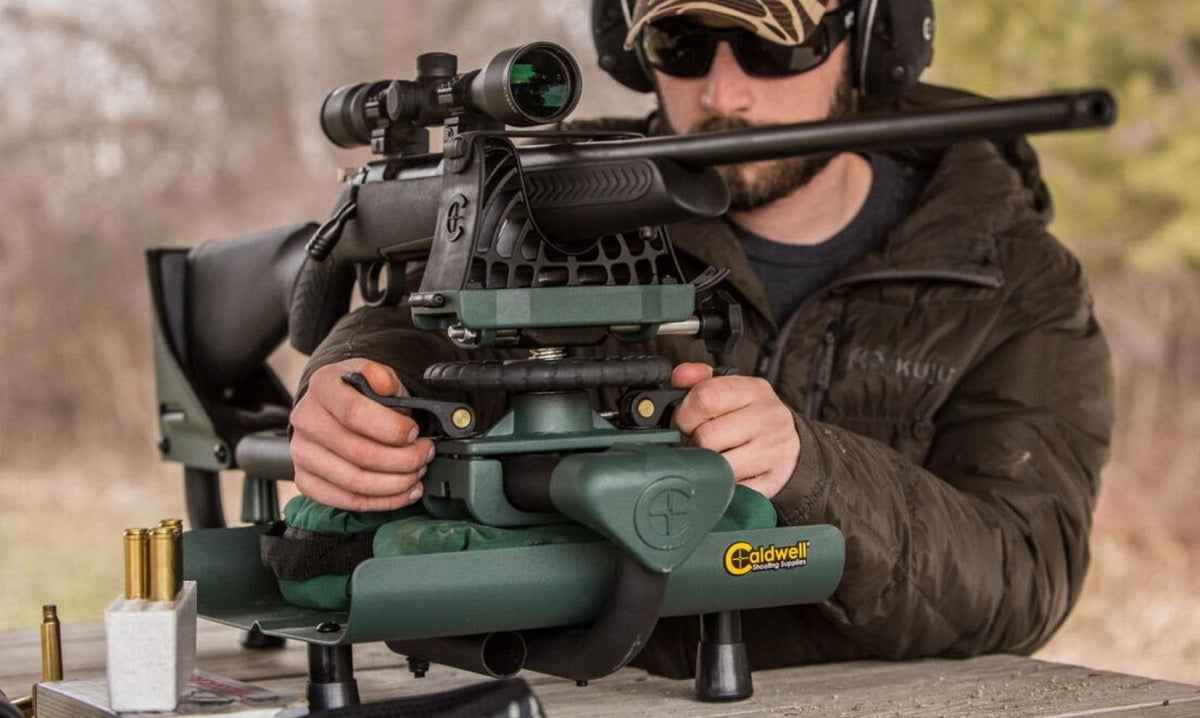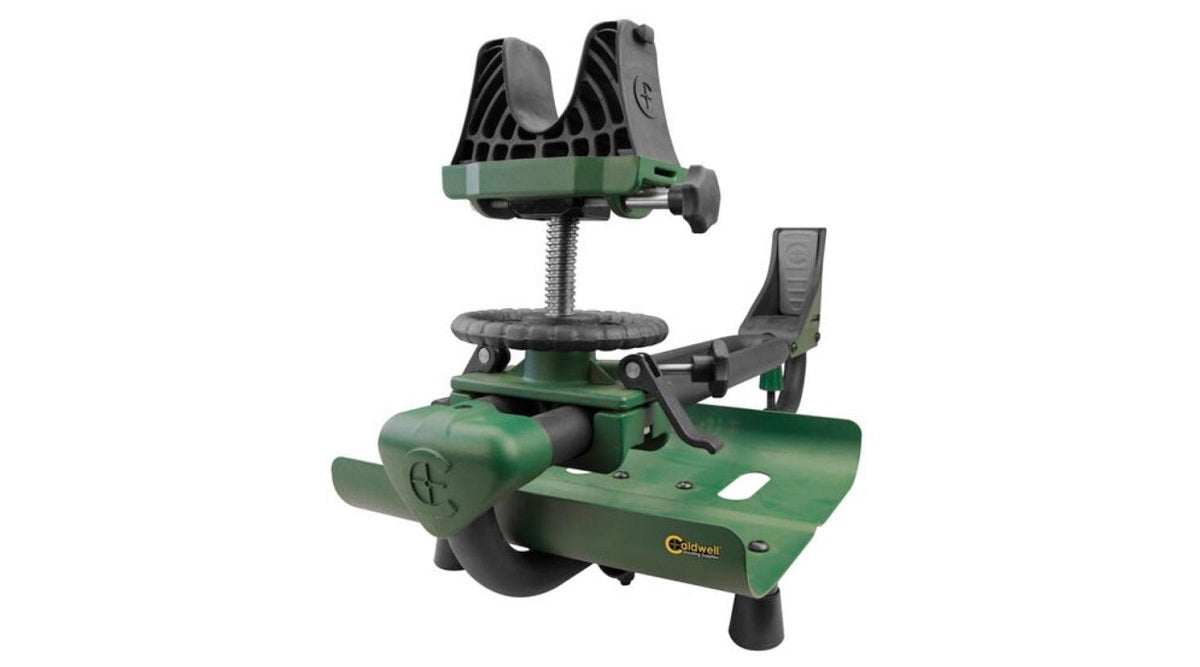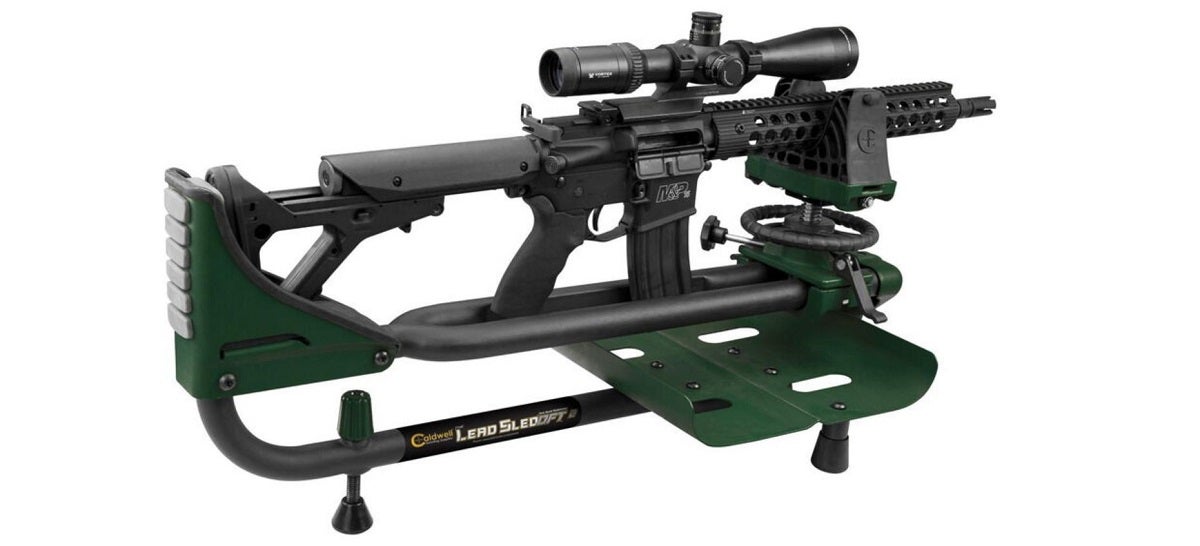AllOutdoor Review – Caldwell Lead Sled DFT 2 Shooting Sled
Travis Olander 12.29.23
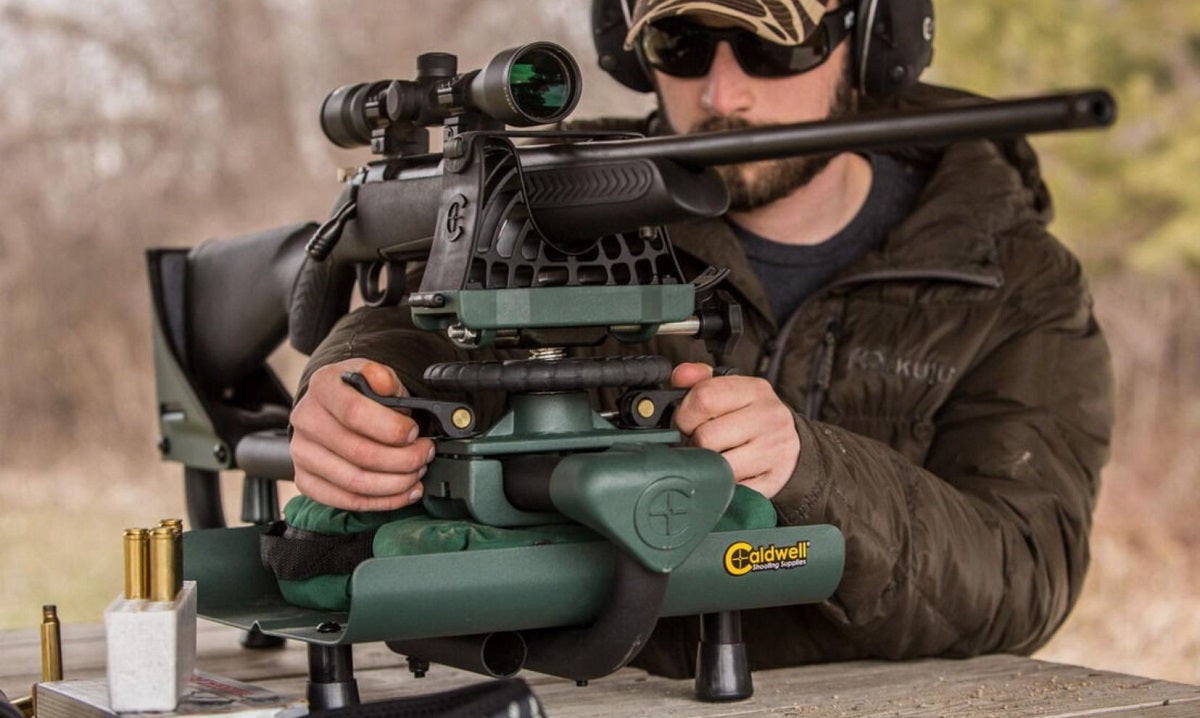
Shooting sleds can become your best friend at the range. They’re great for zeroing a rifle with just two or three shot groups – instead of chasing point of aim with a dozen groupings, or more – and they’re great tools for getting behind a new rifle, or teaching a new shooter the fundamentals of marksmanship. But not all sleds are created equal. I previously review the “Solo” shooting sled, Lead Sled’s budget-minded, compact option for intermediate rifles. The Solo gets the job done, but it can feel a little inadequate, and it lacks some features. Today, we’re looking at their top-tier choice, made for better accuracy, comfort, and recoil management for larger guns: the Lead Sled DFT 2.
Caldwell Coverage on AllOutdoor
- AllOutdoor Review: Caldwell Lead Sled Solo – Shooting Sled Setup
- AllOutdoor Review: Caldwell AR500 Steel 13″ Octagon Target
- [SHOT 2022] Caldwell Claymore Clay Pigeon Target Thrower
- Caldwell releases NEW FDE Color for E-MAX Shadows
- The Caldwell Precision Turret Shooting Rest
Caldwell Lead Sled DFT 2 – Specs & Features
The Lead Sled DFT 2 is an all-steel unit, with a split tubular frame making up the gun support, while the weight tray is a stamped steel sheet. The tray and tube frame are both powder-coated – matte black and Lead Sled’s signature green – so it’ll be perfectly fine for wet weather and humidity. Some basic measurements:
- Horizontal adjustment: 16.5″
- Sled weight, empty: 24 pounds
- Weight capacity: 100 pounds
- Support legs: 30″ L x 12″ W
- Price: $215 (sale) to $299
I’ve used the Lead Sled Solo quite a few times at my local bench seating range, and I found its base to be a bit wide and cumbersome for most tabletops. The DFT 2 is actually more compact, with narrower support legs and a less obtrusive frame.
Its split frame design is also ambidextrous and takes up less room, too – again, unlike the Solo. This is good for left-handed shooters (like me), who otherwise have to contend with a swing arm that winds up getting in the way.
The open weight tray is nice, but you’ll have to be mindful of what’s rest in in there. I found that, over the course of a day of shooting, any weight you’ve thrown in there – bags, dumbbells, or anything else – tends to shift around and eventually fall out. Not a big concern, but something to keep in mind. The weight capacity of the Lead Sled DFT 2 is more than adequate for any large .30-caliber magnum rifle, something the Solo tended to struggle with when I threw a Remington 700 ADL in .300 Win Mag atop it. That hasn’t been the case here.
Coupled with weight, the rubber feet do a good job keeping the sled from sliding around, though this isn’t perfectly foolproof. On a rainy day or atop bare concrete, you should expect a bit of shimmying forward and backward with a high-recoil rifle. But any AR-type rifle chambered in some 6.5mm cartridge, .308, or anything smaller will typically stand planted with no shift.
Speaking of big guns, the DFT 2 excels at hosting big, wide stocks and actions. I’m a big fan of the DFT’2 front rubberized cradle, which is significantly larger and wider than the one found on the Solo. While the Solo does fine with the typical AR-type handguard, and thin wood stock, it struggles to accommodate larger chassis setups and wide, polymer stocks found on long-action rifles. The Lead Sled DFT 2 manages this with no issue, and it provides excellent recoil mitigation to boot, with high grip.
Recoil mitigation is important, too, because the DFT 2’s rear cradle – which also functions as your shoulder rest – just isn’t comfortable. There’s no way around it, this wide, flat piece of steel with laughable rubber insulators does nothing to promote a good shooting stance.
With the tray full of weight, you won’t get punched too much. But Lead Sled really should provide at least a method for attaching a rubber buttpad. The Solo suffers this issue and I was disappointed to see this wasn’t addressed with the DFT 2. This isn’t a major concern; to be clear: You won’t walk away with a bruised shoulder if you load the sled up, but some cushion would be appreciated – especially when you’re trying to hold a tight cheek weld while dialing in an FFP scope at 200 yards. But at least setting up the gun for a good sight picture is easy, and the DFT 2’s various height and length adjustments work phenomenally.
All adjustments are handled underneath the front cradle: You get a large, padded wheel that hosts a jack screw for raising and lowering the rifle inside the cradle, allowing you to angle the sights and muzzle up or down. The jack screw’s then set by turning a tension knob on the left side of the sled, with locks and loosens it. Out back, you can also adjust the height of the rear support foot if you need additional angular adjustments, and it helps to ensure you’ve got optics set to the right height relative to your own.
Immediately beneath the height adjuster are two length-adjustment clamps. Pop both free, and you can slide the entire cradle forward or backward atop the legs and tray to get the right length of pull. The clamps provide plenty of tension and keep the tubular frame locked up solid when closed; no issues with wiggling or swaying with a 20- or 25-pound rifle.
This assembly’s more than adequate – overkill, even – for the typical box mag-fed rifle. And the split frame has plenty of space for any AR-type or similar magazine, though extended mags for, say, an AR-type shotgun might wind up running into the weights or tray below.
Caldwell Lead Sled DFT 2 – What’s Not to Like?
The DFT 2 became my favorite shooting companion during benchtop range days. Even if I don’t need it, I just leave it in my garage next to my Jeep, so I take it with me almost every time I go shooting. If it served no other purpose than zeroing (and saving ammo), I’d still love the thing. It’s incredibly solid, with great, fine-tune adjustments. The two things I don’t like about the DFT 2 are its retail price — it’s expensive at around $300, unless you can find it on sale — and that damn rear shoulder support. I’ve debated drilling and tapping some threaded fasteners into the vertical portion of the shoulder, so I can mount some sort of buttpad for shooting Magnum rifles. It’s just just comfortable out of the box if you sit behind it for an extended period of time. If you’re on the fence about throwing down this kind of money for a shooting sled, check out our review of the Lead Sled Solo. It’s still a great choice for smaller rifles and AR-15s, and it’s lighter on the wallet.
